Grow Radish For An Easy Harvest: ‘I Always Recommend Them To First-Time Growers’

VEGETABLES > RADISHES
Reviewed By PETER LICKORISH

Peter is a Horticulture Lecturer and self-employed Horticulturist, with a passion for diverse areas of the industry - from garden design to the science behind plant growth and propagation. He has completed the Royal Horticultural Society’s Master of Horticulture (MHort) Award and lectures on RHS courses at Bedford College.
Contributions From KATHY SLACK

The author of ‘From The Veg Patch’, Kathy Slack is a chef with a particular fondness for growing her own vegetables. She has won various awards including the Soil Association Best Organic Blogger Award and has a large following online, where she shares many growing tips and recipes with her followers.
IN THIS GUIDE
RADISH GUIDES
A crispy, mildly zesty component of summer salads in Europe, and a richly-flavoured culinary ingredient in spicy cooked dishes in East Asia, the Garden Radish is a wonderfully versatile root vegetable, thanks to its very varied cultivars.
Apart from being a popular veggie, the Garden Radish is much appreciated by gardeners of all stripes – growing it is quite literally child’s play!
“I always recommend radishes to first-time growers,” shares Garden Writer Kathy Slack.
“Except in the hottest summers when they can bolt, they are the easiest, quickest and most joyful of veg to grow.
“They’re very easy and quick to offer results; just sow, water and wait and in 6 weeks you’ll have a clutch of ruby jewels.”
The radish is one of the few truly global vegetables, for it is consumed the world over.
Overview
| Botanical Name | Raphanus sativus |
| Common Name(s) | Radish |
| Plant Type | Annual Vegetable |
| Native Area | Cultivated |
| Hardiness Rating | H3-H4 |
| Foliage | Lobed leaves with basal rosette |
| Flowers | Small four-petalled white flowers |
| When To Sow / Plant Out | February, March, April, May, June, July, August |
| Harvesting Months | January, February, June, July, August, September, October, November, December |
Sunlight
Preferred
Full Sun
Exposure
Sheltered
Size
Height
0.1 – 1M
Spread
0.05 – 0.1M
Bloom Time
Varies
Soil
Preferred
Most fertile soils
Moisture
Moist but well drained
pH
Any
A root vegetable like the potato, it belongs to the Brassica Family or Mustard Family which accounts for its piquant taste.1Raphanus raphanistrum subsp. sativus. (n.d.). Global Biodiversity Information Facility. Retrieved March 23, 2023, from https://www.gbif.org/species/144096278
This root’s amazing variety also adds to its versatility: a few cultivars are mild, even sweetish; at the other extreme, a few are pungent.
Many cultivars are flavourful with a pleasingly sharp taste.
These various radish cultivars’ origins are debated. They are widely thought to be cultivated from what used to be a single sub-species: Raphanus raphanistrum subsp. sativus.
While this would mean the commonly-cultivated, edible radish was technically a sub-species of R. raphanistrum, the Wild Radish, it is now usually identified by its synonym R. sativus; this elevates the plant to the level of a species on its own.
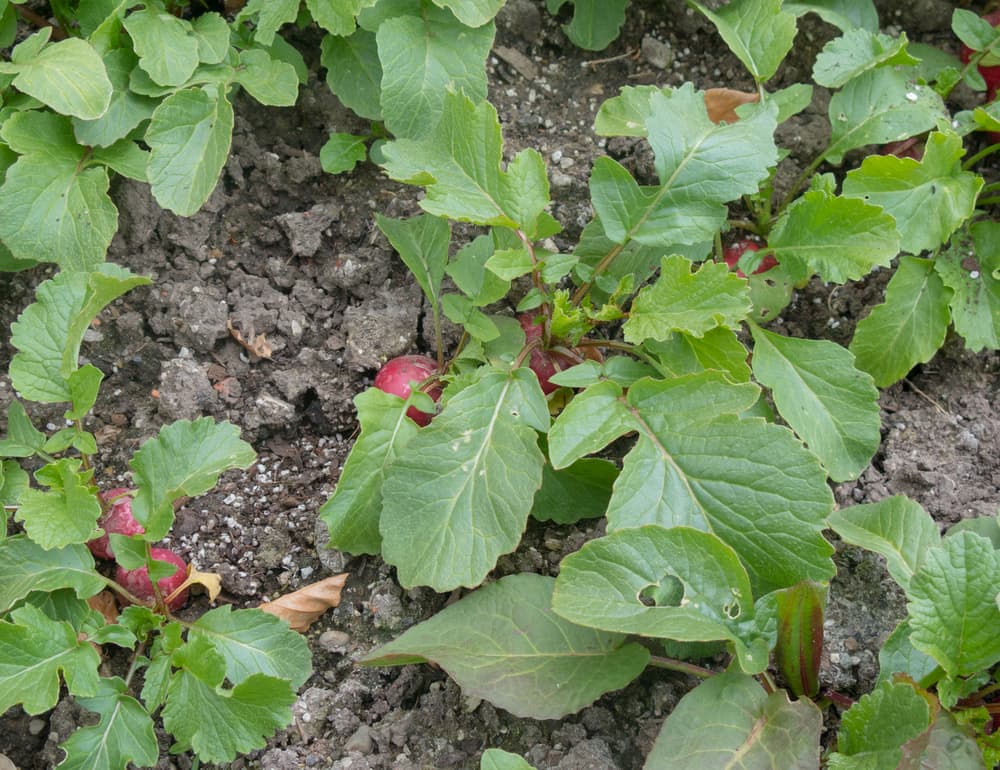
It has been so altered by millennia of human cultivation that, disconnected from any confirmed wild ancestor, it is technically a cultigen, defined by the Oxford English Dictionary as “a plant species or variety known only in cultivation, especially one with no known wild ancestor”.2Cultigen. (n.d.). Academic Dictionaries and Encyclopedias. Retrieved July 31, 2023, from https://en-academic.com/dic.nsf/enwiki/2764426
The thick, fleshy taproot of the plant is the vegetable we know and love (or not!) as the radish.
Most frequently light red on the surface and white inside, varieties can be white, orangeish, beige, brown, purple, and even black.
However, the flesh is almost always white.
Habitat & Growing Conditions
R. sativus or the Garden Radish has escaped from cultivation in some regions of the United States where it is found, albeit infrequently, in disturbed soils, close to vegetable gardens, near rubbish dumps, and alongside highways.
It takes root in uncultivated but fertile and moist ground in areas with higher-than-average rainfall and with full sun.
In the wild it puts up four-petalled purplish-white flowers that attract bees and other pollinators.
It spreads, though very gradually, by seed.
How To Grow Radishes
Sowing
The sowing and harvesting season are very long, and sowing and harvesting seasons also overlap; thus, radishes can be sown, grown, and/or harvested literally year-round.
Sowing season runs from February (under protection) or March through September and harvesting season from May through the beginning of January.
As such, radishes can be both sown and harvested from May through August.

What’s more, most summer radish varieties are ready for harvest about four weeks from sowing.
“To sow summer radishes, I draw a drill about 1cm deep with a draw hoe or cane and label it,” shares Peter Lickorish, a Horticultural Consultant.
“I find that by sowing radishes fairly thinly in this drill, I can harvest them at intervals along the line as they gradually develop.
“This thins them and at first, yields leaves, then baby roots, before finishing with the last, well-developed radishes no more than six weeks after sowing.”
Winter radishes take much longer to mature, typically about eight weeks – though some winter varieties may take ten to twelve weeks.
The ‘winter’ part of their name refers to their harvest time.
As a rough guide, sow summer radishes from March through early August, and winter radishes from mid-July to September.
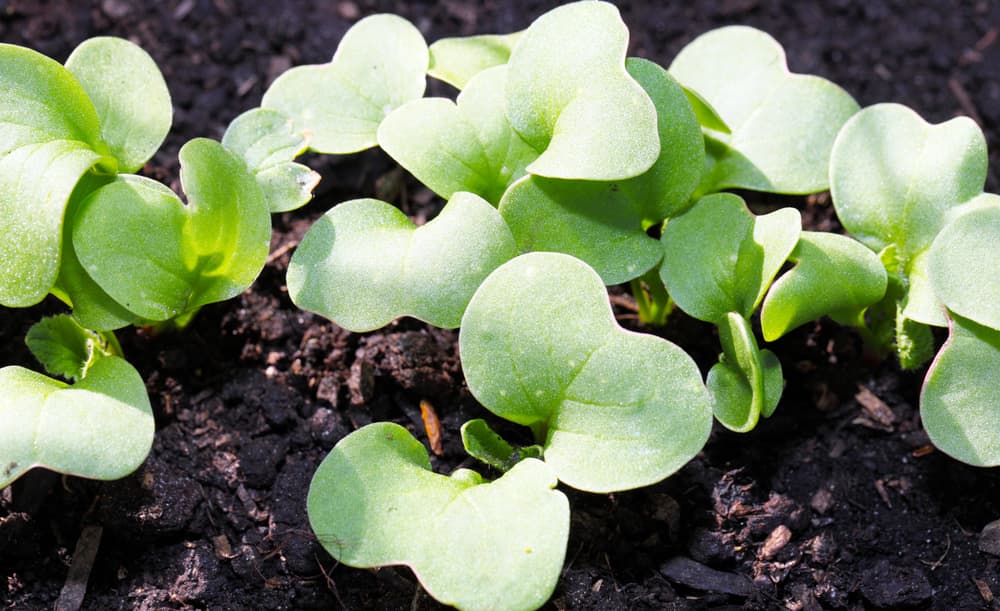
Check the instructions on each seed packet for optimal sowing time.
The trick to enjoying a continuous months-long harvest is to sow seeds in small quantities on a regular schedule during the sowing season.
This is known as succession sowing.
Soil Requirements
Most types of soil will do but a balanced mix of clay, sand, and chalk amended with well-rotted manure or organic compost is a very good type of soil for this root vegetable.
The subsoil and underlying ground must be free of stones and rocks.
It is a good idea to till the bed to prep and loosen the soil – it must drain very well and not be prone to waterlogging.

Soil pH ideally should be in the slightly acidic to neutral range, that is 6.1-7.3, but here too radishes give you a fair amount of leeway.
Sunlight
Summer radishes should get morning sun and indirect sunlight or shade in the afternoon, especially in the sunnier parts of the country.
Winter radishes may be grown in full sun locations.
Container Growing
Besides outdoor beds, summer radishes and the not-so-big winter radishes may even be grown in planters or large containers.
Some summer radishes can even be grown in grow-bags.
Watering
Water well and regularly, say twice or thrice a week, such that the subsoil stays moist.
Keeping the soil moist is of special importance when growing summer radishes in full sun.
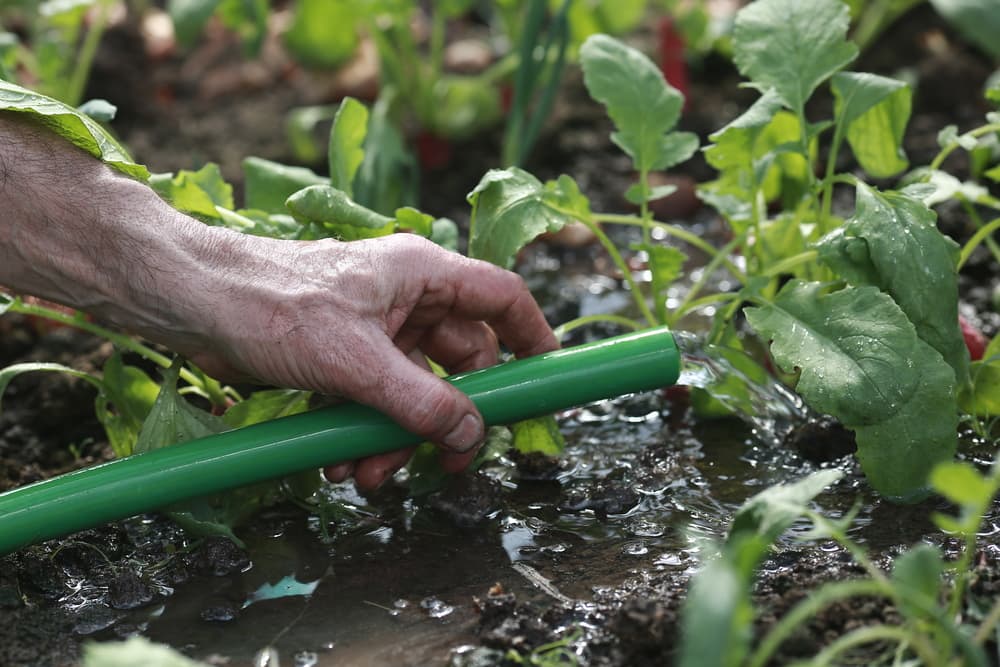
Soil moisture is also a factor when growing winter radishes.
If the soil dries out and remains dry for some days, the radishes’ growth will be stunted and they may well end up bland and tasteless, lacking their distinctive rich, flavourful appeal.
Irregular moisture levels may cause root splitting or bolting.
Harvesting
When harvesting summer radishes, the general guideline is that it is better a little too early than a little too late.
If you harvest summer radishes a little too early you lose nothing except a bit of size.
Pick them a little too late, and the vegetable can quickly become stringy or woody, depending on the variety, with the taste becoming flat, bitter, or unpleasantly pungent.

To use size as a general guideline, it is at about 2-3cm in width that summer radishes are young and are best harvested.
While summer radishes must be harvested on time, winter radishes allow more flexibility though do not leave them in the ground too long either.
Pick winter radishes by eyeballing the width – when a given vegetable looks like it is more or less the correct width for that variety, it can be pulled up.
Harvest them early for slicing raw into salads, and late for making pickles, gazpachos, stewing, or for culinary use.
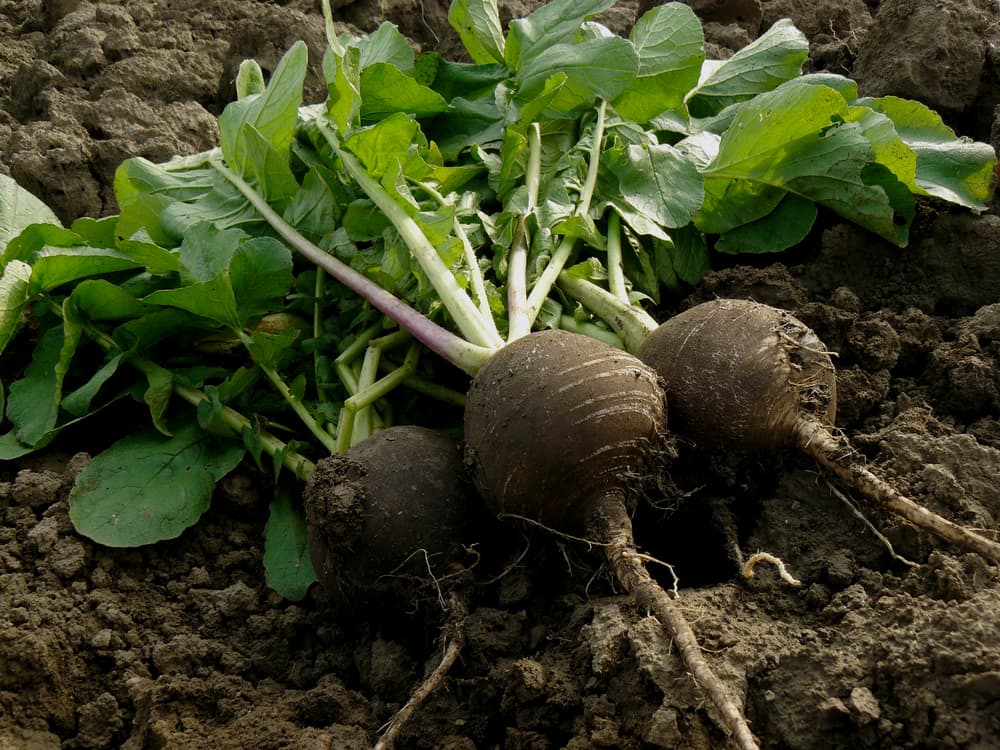
Keep in mind that not all types of winter radishes can be enjoyed raw.
If the atmospheric temperature is predicted to stay at -5°C or less, you should pull up any remaining winter radishes otherwise they could sustain frost damage.
This should not be a worry virtually anywhere in the UK except parts of Scotland.
To pick a (small) summer radish, grasp the leaves at the top, wiggle the radish loose, and gently pull it up.
It may not work out quite that way with (larger) winter radishes – the elongated or cylindrical types are much longer and much heavier.
You can end up with only foliage or a split or broken radish in your hand!
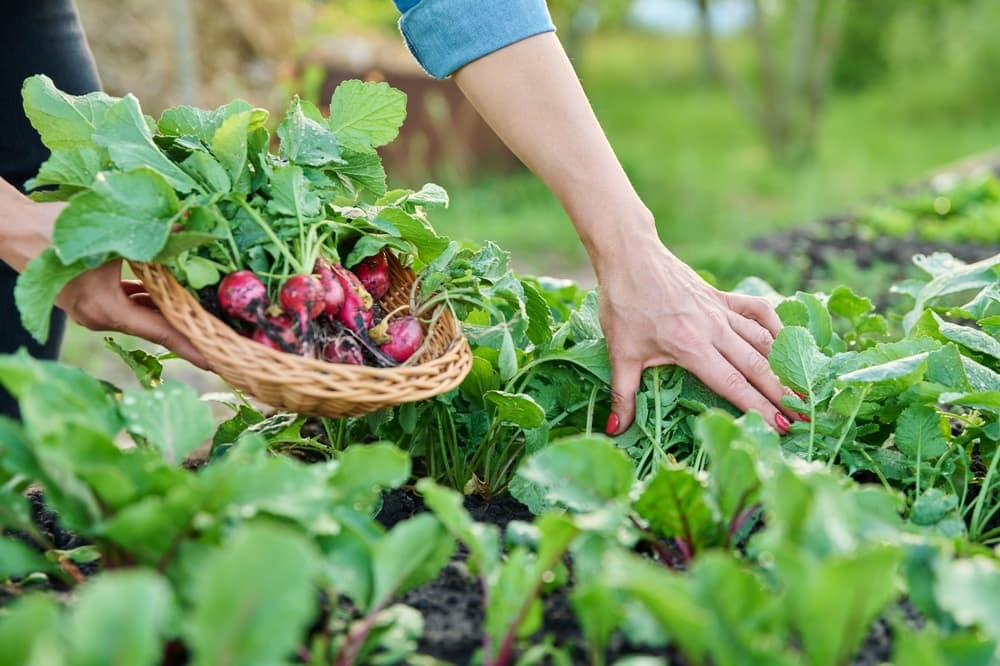
If you do not feel the radish getting loose and coming up through the soil, lightly dig around it and remove and loosen the soil until the radish is ‘unstuck’ enough to pull up.
A hand fork is ideal for this.
Summer radishes should be enjoyed soon after they are harvested, when they are fresh and succulent.
Winter radishes may be stored as they will keep well in the fridge’s crisper or even in a bin in a cool basement.
The leaves of winter radishes are not only edible, they have their own taste merits.
They do not keep well and should be consumed fresh, within 24 hours of picking.
Common Problems
The flea beetle is perhaps the most common pest to attack radishes.
Flea beetles chew up the leaves, especially of young plants, weakening and stunting the growing root vegetable.
They often leave round holes in the middle of leaves.
Organic solutions may be used to kill these pests and the plants can be protected with narrow-gauge wire netting.
Brassica downy mildew is a disease that radishes are prone to – it is a serious disease that destroys the root vegetable, especially at the seedling stage in spring.
It is identified by an unsightly white growth covering the foliage, and yellowing of the foliage.
Promptly remove and destroy all affected plants – retail controls to treat downy mildews are not available.
Slugs and snails eat radish seedlings, but these common garden nuisances are more easily dealt with.
References
- 1Raphanus raphanistrum subsp. sativus. (n.d.). Global Biodiversity Information Facility. Retrieved March 23, 2023, from https://www.gbif.org/species/144096278
- 2Cultigen. (n.d.). Academic Dictionaries and Encyclopedias. Retrieved July 31, 2023, from https://en-academic.com/dic.nsf/enwiki/2764426

